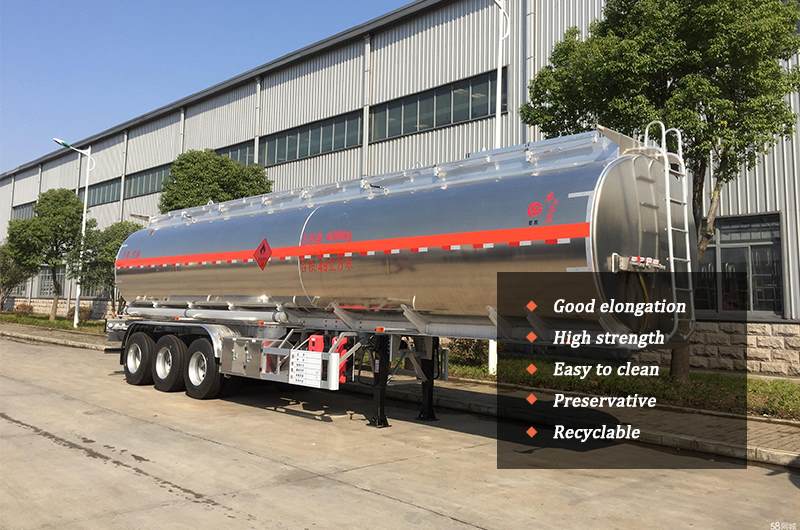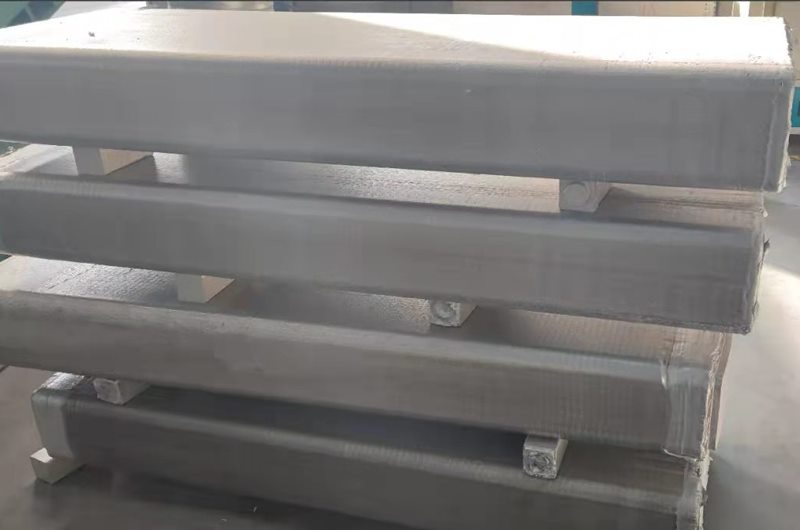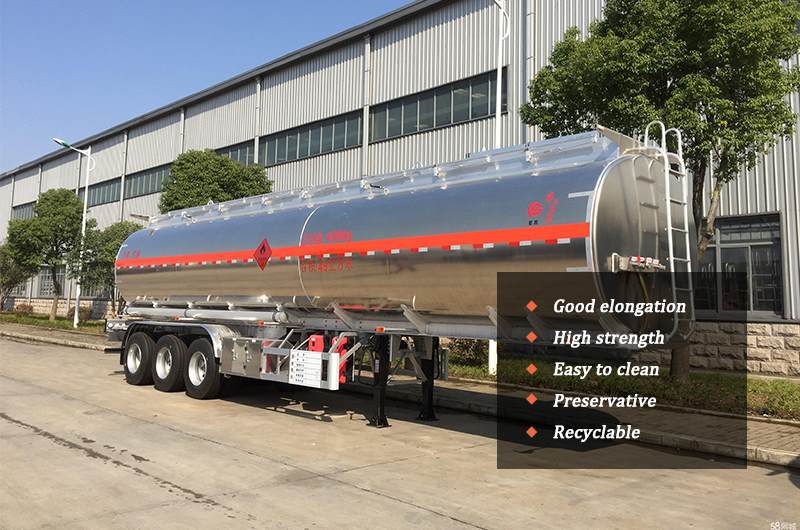5083 aluminum alloy belongs to Al-Mg alloy in deformed aluminum alloy. Mg is its main alloying element. It is an aluminum alloy that cannot be strengthened by heat treatment. It has medium strength, good corrosion resistance, processing performance and welding performance....
Introduction of 5083 aluminum alloy large flat ingot for tanker truck
5083 aluminum alloy belongs to Al-Mg alloy in deformed aluminum alloy. Mg is its main alloying element. It is an aluminum alloy that cannot be strengthened by heat treatment. It has medium strength, good corrosion resistance, processing performance and welding performance. It is very ideal. Aluminum alloy material for tank car body manufacturing. However, due to the high strength of 5083 aluminum alloy and the solidification characteristics of large-sized slabs, through-crack defects occur in the DC casting process of large-sized slabs, resulting in low product qualification rates and economic losses for factories.
Specifications of 5083 aluminum alloy large flat ingot for tanker truck Manufacturing
According to user requirements, the specifications of 5083 aluminum alloy flat ingots are: 2130*1870*630*6000mm, which belongs to the production category of large-sized aluminum alloy flat ingots.

The chemical composition requirements of the 5083 aluminum alloy ingot: the Mg content of the 5083 aluminum alloy is 4.1%-4.8%. When the Mg content of the aluminum alloy is greater than or equal to 3.0%, it is a high magnesium alloy. Therefore, 5083 alloy is a typical high magnesium aluminum alloy.
The requirements for aluminum alloy flat ingots for plates used for rolling tank car manufacturing are: grain size ≤2 grades, 1 loose grades, hydrogen content ≤0.12mL/100g-Al; no slag inclusion pores, cracks and feather crystals in the ingot organize.
Influencing factors of through-crack defects in 5083 aluminum alloy large flat ingots
- Characteristics of 5083 aluminum alloy
The Mg content of 5083 aluminum alloy is high. Because Mg element significantly improves the strength of the alloy, the 5083 alloy has the characteristics of high strength. When DC casting a large slab of 5083 alloy, due to the influence of cooling conditions, metal liquid level, casting speed, etc., Mg segregation layer defects will occur on the surface of the ingot. The Mg segregation layer has an adverse effect on the subsequent rolling and product performance. Mg segregation will reduce the bonding energy and bonding force of atoms on the grain boundary, easily generate vacancies on the grain boundary, and increase the brittleness of the grain boundary. This is the high-strength Al-Mg caused by Mg segregation. The root cause of alloy grain boundary cracking.
- Cooling intensity
The specification of 5083 aluminum alloy flat ingot is 630mm*2130mm, and the width-thickness ratio is 3.36. Because the width and thickness of the ingot are very different, in the DC casting process, if the cooling intensity is not set properly, it will cause a large cooling stress during the solidification of the ingot. The small face of the ingot cools quickly, and the large face cools relatively slowly. Therefore, the strength of the fast-solidified part is higher than that of the slow-solidified part, thus forming an outward tensile stress on the large surface. When the tensile stress is greater than the bonding force between the alloy atoms in the large surface area, thermal cracking will occur.
- Mobile Hot Festival
During the casting process of 5083 aluminum alloy, due to the difference in the thickness of the casting section, a hot spot will be formed at the junction of the small section and the large section. In the 630*2130mm, 5083 aluminum alloy large flat ingot, its geometric hot spot is located in the geometric center of the ingot. The hot junction is the part where the casting slowly solidifies, that is, when the small surface of the ingot has solidified and the large surface forms a solidified shell, the hot junction of the cast key is still in a liquid or semi-solid state, and the strength of the liquid or semi-solid alloy is far greater. Much smaller than the strength of the solid alloy, coupled with the effect of solidification shrinkage stress, the geometric hot joint of the ingot will be cracked.
- Surface inclusions
Observing the occurrence of through-crack defects in 5083 aluminum alloy flat ingots, it is found that all flat ingots with through-crack defects have large area and large depth of oxidation inclusions at the head of the ingot. The cracks start at the aggregation of oxide inclusions, and then extend along the center of the ingot, eventually leading to through cracking of the ingot. From this, it can be inferred that the stress caused by the shrinkage during the casting process of the slab, coupled with the large and deep accumulation area of oxide inclusions on the surface of the ingot, makes the metal matrix of the ingot discontinuous in this area, and the strength is the weakest, resulting in the penetration of the ingot. generation of cracks.
- Alkali metal and alkaline earth metal content
The sodium brittleness of high magnesium alloys, the effect of Na mass fraction on the hot cracking tendency of high magnesium aluminum alloys, is related to the degree of Na contamination of the alloy melt, and increases with the increase of Na mass fraction, and the Na content is given Influence on hot cracking of high magnesium alloys. It is believed that in aluminum alloys containing more than 3% Mg and high zinc aluminum alloys containing more than 2.7% Mg, with the increase of Na content in the melt, the cracking tendency is very serious, which is manifested as a crack during casting. Hot cracks and edge cracks during rolling.

Solution to the through-crack defect of 5083 aluminum alloy large flat ingot
- De-alkali in the package of electrolytic aluminum solution
- Improve the injection method of electrolytic aluminum solution to reduce the formation of oxide inclusions
- 5083 aluminum alloy melt purification
- Covering of Alloy Solution after Refining
- Select suitable casting process parameters
- Improve the quality of cooling water






